Sergio Mattarella al Politecnico
As part of a two-day state visit to Switzerland, the Italian President stopped off at ETH Zurich on Wednesday (30 November) in the company of President of the Swiss Confederation Ignazio Cassis. After a welcome by ETH President Joël Mesot and some words of greeting from the two guests, researchers and students of the university provided an insight into their work.
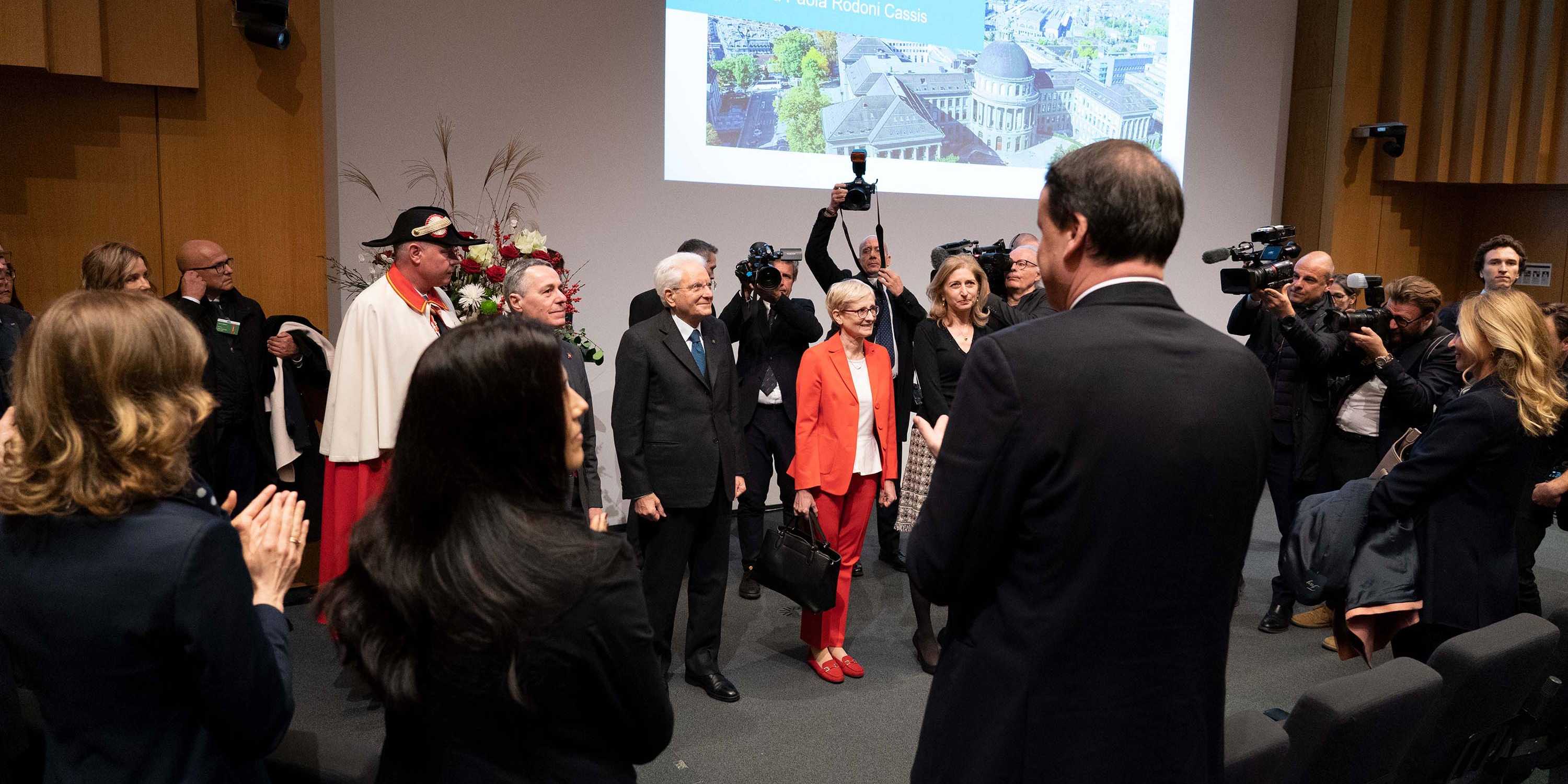
Joël Mesot warmly welcomed the Italian President, who was accompanied by his daughter, and the President of the Swiss Confederation, who was accompanied by his wife, along with guests to a packed Audi Max. In his welcome address, he emphasised how much Italy and ETH Zurich had in common. For example, 1,100 students and scientific staff as well as 27 professors working at ETH came from Italy. And researchers maintained more than 450 contacts with Italian universities, research institutions and companies.
Swiss universities and Europe
Mesot referred to ETH’s various historical links with Italy. He explained how ETH’s mission today remained unchanged since its foundation – to be at the service of society. The world today, however, is a different place, with numerous crises and challenges facing it and Switzerland. To solve them requires not only the political will for cross-border cooperation but also the contribution of science and innovative technologies. He then thanked the Italian President for his visit: “We greatly appreciate that you are giving us the opportunity today to build a cultural bridge while exchanging ideas with our researchers and students.”
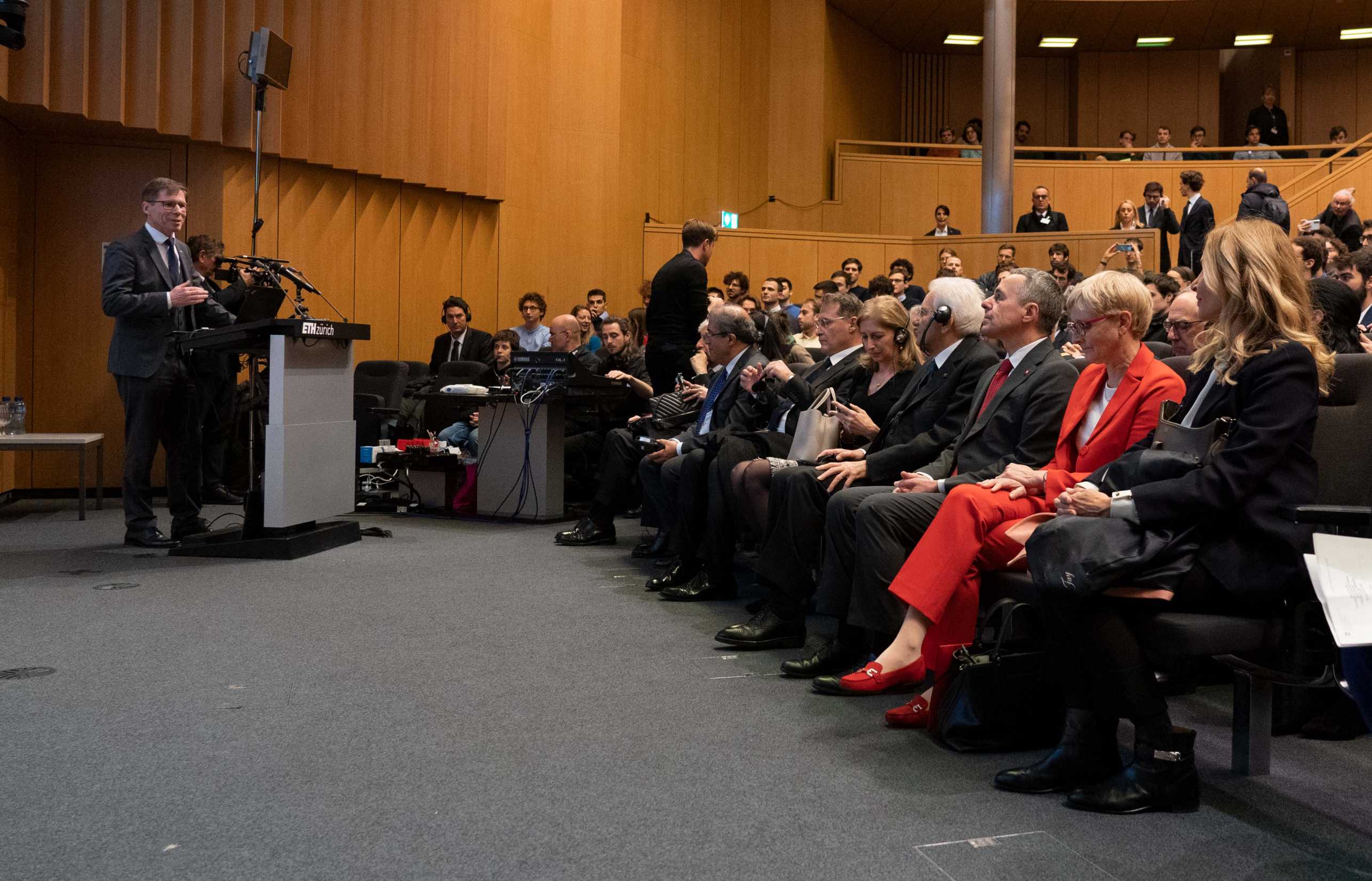
From the beginnings of ETH to today’s challenges
At the beginning of his welcoming address, President Ignazio Cassis spoke of ETH’s historical connection with Ticino, specifically Stefano Franscini, the first Federal Councillor from the southern canton and one of the founding fathers of ETH. He explained how the university, of which the whole of Switzerland was proud today, had been established under his supervision. He thanked all researchers, students and lecturers for their contribution to making Switzerland one of the most innovative countries in the world.
Cassis went on to stress how science was being particularly challenged by the current crises to come up with answers for the future. He went on to say how very much in favour he was of scientific diplomacy, because it was important that everyone – and not just a small group – benefited from new findings and technologies. He also emphasised that innovations had to be accepted by society and their potentially negative effects recognised at an early stage.
With regard to international cooperation, Cassis said: ”We Swiss and Italians, who form a common living space bound by friendship, know how fundamentally important our scientific cooperation is for the citizens of our two countries.”
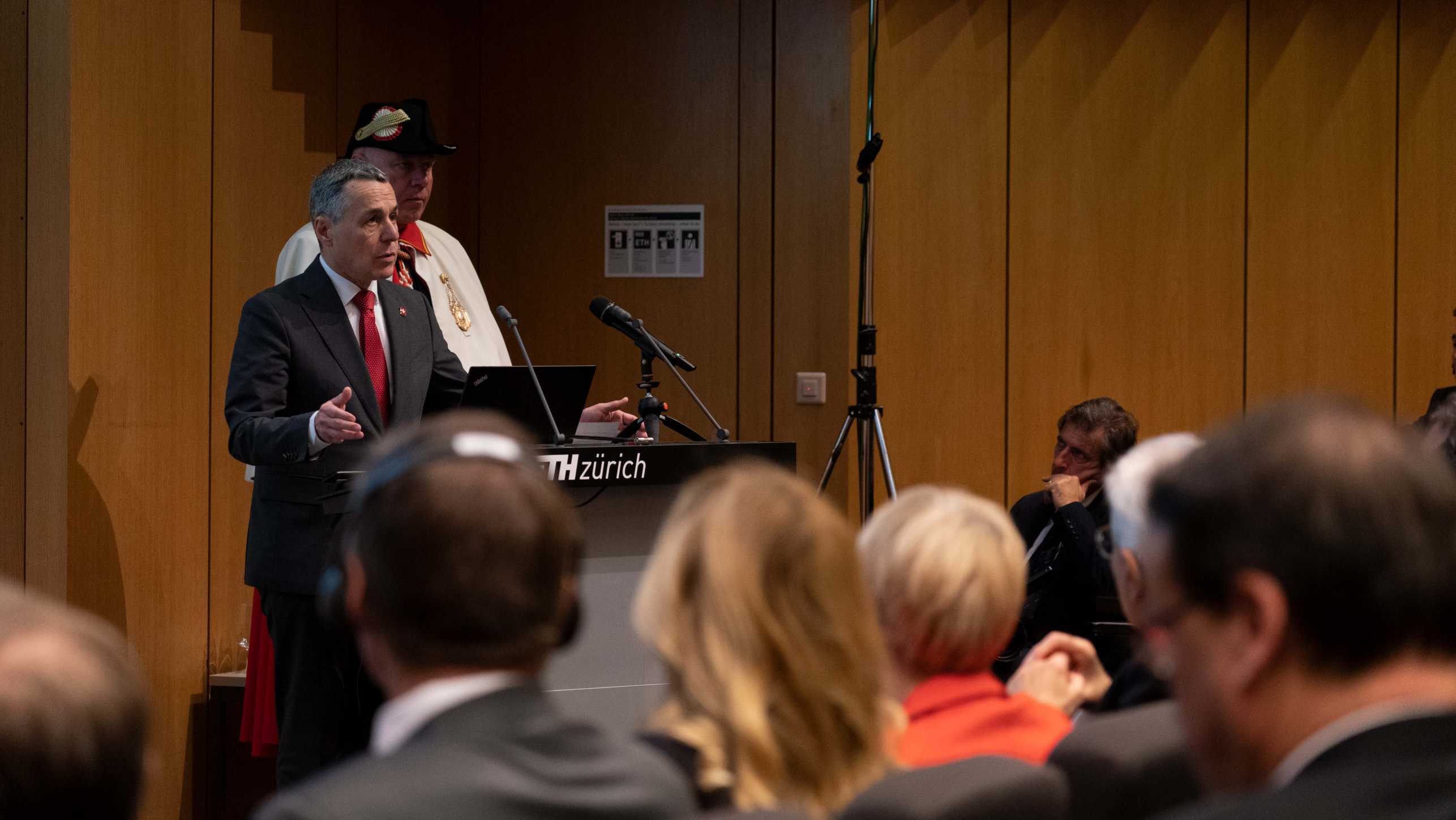
«Prima di essere ingegneri voi siete uomini»
Sergio Mattaralla remarked “Universities have been the foundation of Europe since the beginning of the 19th century.” He went on to say how their networks enabled them to offer a first form of integration in the spirit of the “Republic of Letters” and united the continent’s greatest thinkers. He explained how they had crossed existing boundaries and breached regulations in the spirit of freedom. Since its foundation, ETH Zurich had breathed the spirit of the universitas studiorum europea and was fertile ground on which the best results could flourish.
He pointed out how the many Italian researchers, lecturers and students in the room were testimony to the intensive scientific cooperation between the two countries. Mattarella thanked the researchers for their previous cooperation in the European research programmes and expressed his wish that Switzerland would soon be able to participate in Horizon Europe again. He went on to stress how freedom and democracy – the central tenets of the people of Europe – depended on the knowledge that universities provided. Addressing the students, he said: “The exchange of ideas with young people from different countries in Europe promotes the adoption of a critical mindset and a common understanding.”
Mattarella concluded his address by echoing President Cassis’s remarks and recalling the responsibility that academics, especially those at technical universities, have towards society. Referring to the marble plaque in front of the Audi Max, he quoted the saying of Francesco de Sanctis, who held the first professorship of Italian literature at ETH from 1856 to 1860: “Before you are engineers, you are first and foremost human beings.”
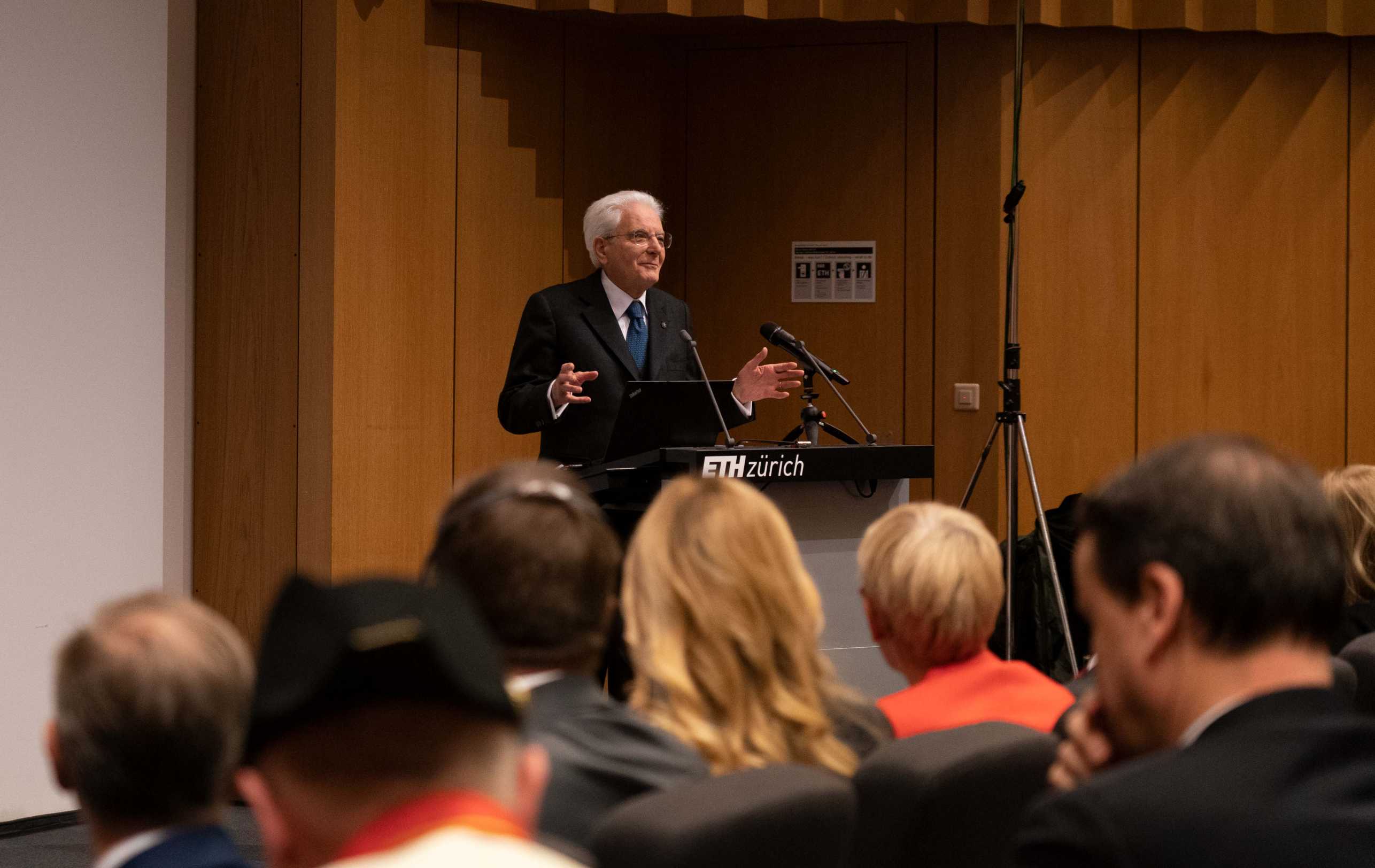
Innovation and entrepreneurship
Innovation and entrepreneurship were the focus of the second part of the event, which was moderated by ETH Rector Günther Dissertori.
Stefano Brusoni, Professor of Technology and Innovation Management, and his group are investigating obstacles to the implementation of new technologies. Using two examples of Italian cooperatives, he showed the important role played by social factors.
Viola Becattini, a postdoctoral researcher at the Institute of Energy and Process Engineering, is researching technologies for CO2 capture, transport and storage. Using various pilot projects in Switzerland and abroad, she showed how negative CO2 emissions can contribute to a net-zero society.
Health projects
Paola Picotti, Professor for Molecular Systems Biology and two-time winner of an ERC grant, has developed a method to measure structural changes in thousands of proteins simultaneously. One of her goals is to develop a marker that detects Parkinson’s disease, which is not possible using current diagnostic tools.
Then it was the turn of Michele Gregorini, who completed his doctorate at ETH Zurich and who as a Pioneer Fellow co-founded the ETH spin-off Diaxxo. The company develops DNA analysis systems that enable a precise, reliable, rapid and cost-effective diagnosis. Their point-of-care PCR tests deliver results within 30 minutes and allow doctors to detect and treat diseases accordingly quickly. Since the tests do not require a complex infrastructure and only cost around five francs, they are particularly suitable for poor countries.

After the presentations in the Audi Max, the guests went to the dome of the Main Building, where students and researchers from Professor Stanisa Raspopovic’s group were awaiting them. They demonstrated six wearable robotic assistance systems for rehabilitation that they are working on in the Neuroengineering Lab.
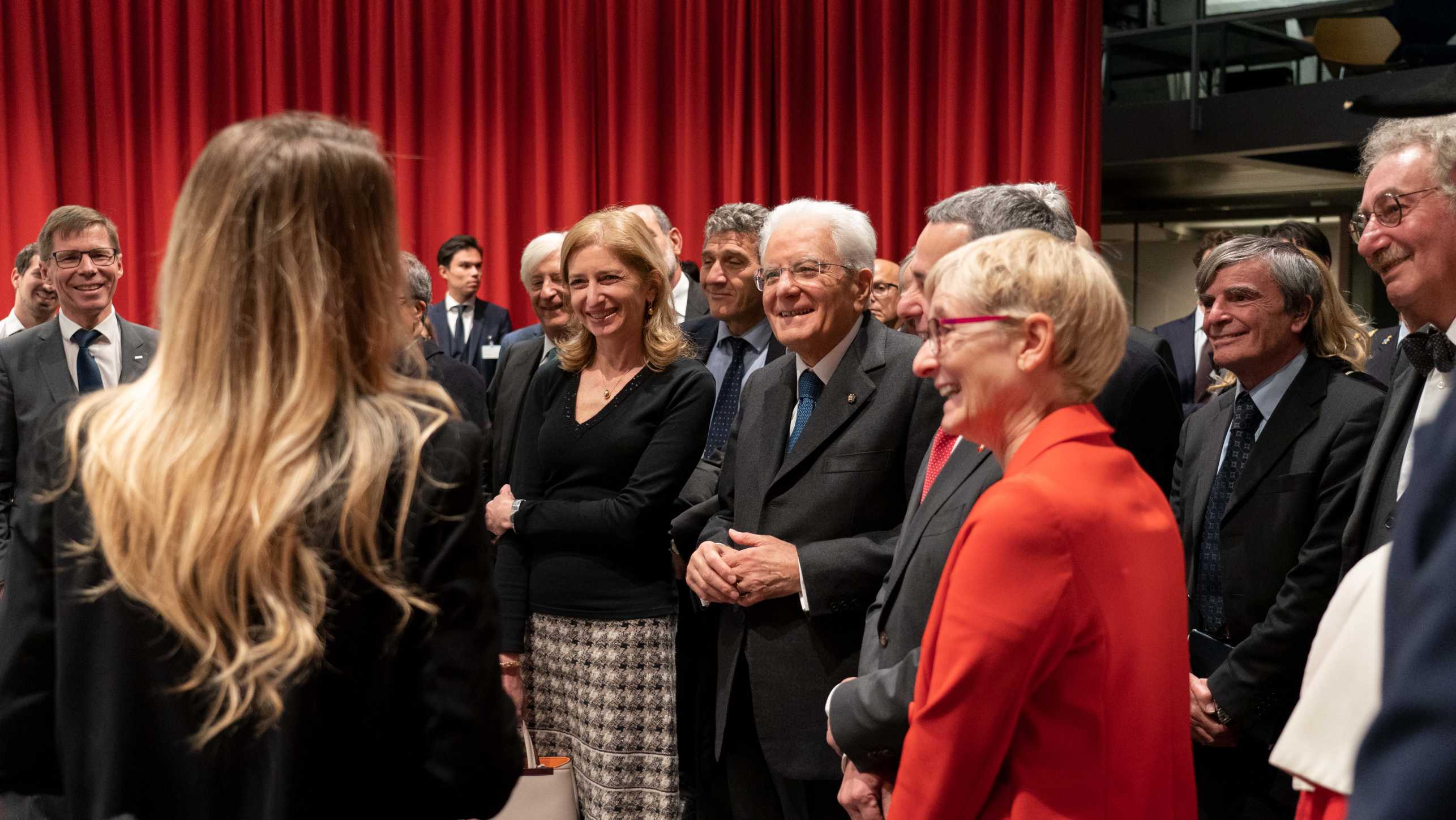
Comments
No comments yet